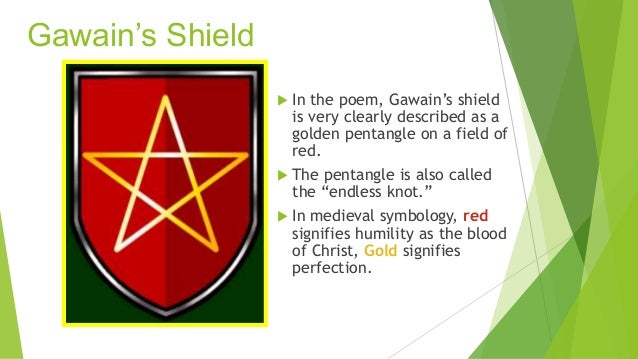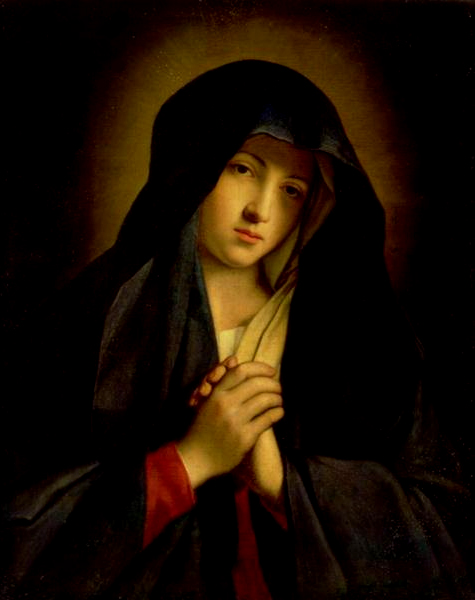Completed
First Quarter:
“Leaf
by Niggle,” a short story by J.R.R. Tolkien.
“The
Turkey,” a short story by Flannery O’Connor.
“The
Trouble,” a short story by J. F. Powers.
Magnificat,
January 2020, a monthly Catholic devotional.
“Theft,”
a short story by Katherine Ann Porter.
Book
of Baruch, a book of the Old Testament, RSV Translation.
Magnificat,
February 2020, a monthly Catholic devotional.
Magnificat,
March 2020, a monthly Catholic devotional.
Completed
Second Quarter:
Gospel
of John, a book of the New Testament, RSV Translation.
Introduction
to the Devout Life, a non-fiction work by St. Frances de
Sales.
“The
Blue Hotel,” a short story by Stephan Crane.
Magnificat,
April 2020, a monthly Catholic devotional.
“A
Good Man is Hard to Find, a short story by Flannery O’Connor.
Oronooko
or The Royal Slave, a novel by Aphra Behn.
“The
Magic Paint,” a short story by Primo Levi.
Magnificat,
May 2020, a monthly Catholic devotional.
Lord
of the World, a novel by Robert Hugh Benson.
The
Book Of Ezekiel, a book of the Old Testament, KJV
translation.
The
Book Of Ezekiel, a book of the Old Testament, RSV
translation.
Magnificat,
June 2020, a monthly Catholic devotional.
Completed
Third Quarter:
“God
Rest You Merry Gentleman,” a short story by Ernest Hemingway.
Educated,
a non-fiction memoir by Tara Westover.
Magnificat,
July 2020, a monthly Catholic devotional.
Brideshead
Revisted, a novel by Evelyn Waugh.
Utopia,
a novella by St. Thomas More.
Magnificat,
August 2020, a monthly Catholic devotional.
Book
of Daniel, a book of the Old Testament, KJV Translation.
Last
Post,
the 4th novel of the Parade’s End Tetralogy by Ford Madox
Ford.
Book
of Daniel, a book of the Old Testament, RSV Translation.
Magnificat,
September 2020, a monthly Catholic devotional.
Completed
Fourth Quarter:
Catherine
of Siena, a biography by Sigrid Undset.
“Hermann
the Irascible—A Story of the Great Weep,” a short story by Saki (H.H. Munro).
“The
Thistles in Sweden,” a short story by William Maxwell.
Magnificat,
October 2020, a monthly Catholic devotional.
The
Book of Revelation, a book of the New Testament, KJV translation.
The
Book of Revelation, a book of the New Testament, RSV
translation.
Justification
by Faith and Works?: What the Catholic Church Really Teaches,
a booklet of theology by Jimmy Akin.
Quas
primas, an encyclical by Pope Pius XI.
“Blessed
Harry,” a short story by Edith Pearlman.
“Times
Square,” a short story by William Baer.
“The
Androgynous Papa Hemingway,” a review of Kenneth S. Lynn’s Hemingway by James Tuttleton.
Magnificat,
November 2020, a monthly Catholic devotional.
I
Am Going: Reflections on the Last Words of Saints,
a non-fiction devotional work by Mary Kathleen Glavich, SND.
Sir
Gawain and the Green Knight, a long narrative poem by an anonymous
author, translated into contemporary English by Marie Borroff.
Sir
Gawain and the Green Knight, a long narrative poem by an anonymous
author, translated into contemporary English by Simon Armitage.
The
City of God Books 1-10, by Augustine of Hippo, translated
by William Babcock.
Magnificat,
December 2020, a monthly Catholic devotional.
“Dédé,”
a short story by Mavis Gallant.
Currently Reading:
Dominican
Life: A Commentary on the Rule of St. Augustine,
a non-fiction work by Walter Wagner, O.P.
Catholicism:
A Journey to the Heart of the Faith, a non-fiction work by
Robert Barron.
Prince
Caspian, a novel from the Chronicles of Narnia series by C.
S. Lewis.
###
I
think this was a good year of reading.
Perhaps a little short of the amount from last year, but last year was
exceptional. This year I think I can say
was still at or above average. One thing
you will find added to my listing this year are the listing of Magnificat, a monthly devotional that
provides the daily Mass readings, lives of saints, and devotional
articles. I read most of it every
month. I have been doing so for years,
so this is not additional reading material.
I just never thought about listing it here. A typical edition runs about 450 pages every
month, and I read at least half of it.
That’s quite a bit of reading I never documented. You can assume that most of the years I have
been keeping this blog I have also been reading the monthly Magnificat.
On
a comprehensive level, I read twelve books and twenty-four “shorts,” a short
being lesser than a book length work.
That’s one book per month and two shorts per month, which is spot on my
intended annual goal, I should also
state that three books are still being read and are more than half way
through. When I finish, they’ll wind up
being counted into next year’s reading but if you consider them here they
pushed my overall reading above my goals.
Of
the books completed, five were non-fiction and seven were fiction. Let’s start with the non-fiction. Of those, one was a work of theology (Part 1
of St. Augustine’s City of God), one
a biography (Sigrid Undset’s Catherine of
Siena), one a memoir (Tara Westover’s Educated),
and two devotional books (St. Francis de Sales’ Introduction to the Devout Life and Kathleen Glavich’s I Am Going: Reflections on the Last Words of
Saints).
My
edition of City of God, translated by
William Babcock, is physically two books, which I call the first, Part 1 (Books
1-10). The entire City of God is over a thousand pages, so you can see why I count it
as two separate books. And to complicate
matters, what we might call chapters within the work, St. Augustine calls
“Books.” Part 1 deals with the history
of Rome, her pagan religion, and Greco-Roman philosophy as it relates to
Christianity. It can be a bit dry
reading, but if you have an interest in classical Rome it can be quite
fascinating. It’s a great classic of
philosophy and theology and a core part of the Western intellectual
tradition. Part 2 deals with Judaism and
Christianity itself, so I can’t wait.
Sigrid
Undset’s Catherine of Siena should be
familiar to readers here. It’s my second
read of this superb biography. I don’t
think I have actually blog posted on the same book on separate occasions. This is the first time. As you know if you go back to my 2013 posts,
this was a transformational book for me. Not only did it make me more devout
but it led to my devotion to St. Catherine as my patron saint. I think I have called her the patron saint of
this blog. The book is just as superb on
a second read.
If
you read reviews of Educated, Tara
Westover’s memoir of her upbringing to get an education when her father refused
to send her to school (she ultimately went to college and then earned a Ph.D. from
Cambridge in United Kingdom), you will see reviews at the two extremes: either
you loved it or did not think it great.
I ended up with those that didn’t find it well put together, but it does
hold your interest. She’s a smart young
lady but if you check my review here on my blog you’ll see I think she left too
many answered questions.
The
two devotional books were both great reading.
St. Francis de Sales’ Introduction
to the Devout Life is the absolute best work on spiritual direction. Actually I would consider this a manual for
spiritual direction. In my posts I said
I was sorry I had bought this as an eBook.
A physical book should be kept on one’s bedside for frequent
review. Kathrine Glavich’s devotional I Am Going uses famous saint’s dying
last words as a starting point for a devotional reflection. There are about one hundred saints whose last
words are identified and, with the background and reflection, amount to a
couple of pages for each saint. That
provides a nice bedtime reading where if you read one saint per night, you can
finish in just over three months.
It
is interesting that the fictional works divide between those written in the 20th
century and those written in pre-modern times.
Though I claim seven fictional works, there are six actual works since I
count Sir Gawain and the Green Knight twice
because I read two different translations.
Sir Gawin is also not an
actual novel but a long narrative poem that reads like a novel. The three pre-modern works were Sir Gawain (written around 1370), St Sir
Thomas More’s Utopia (1516), and
Aphra Behn’s Oroonoko: or, the Royal
Slave (1688). Sir Gawain in any translation is a joy to read, while Utopia and Oroonoko are a bit more problematic. Once I understood them I appreciated them
more. Read my blog entries. You can search them in the search box at the
top left of the blog page.
The
more contemporary works were Robert Hugh Benson’s dystopian novel, Lord of the World (1907), Evelyn Waugh’s
Brideshead Revisted (1945), and Ford
Madox Ford’s Last Post (1928), the
fourth and last novel in Ford’s Parade’s
End tetralogy. Brideshead is a great classic of the 20th century, and
deservedly so, and Lord of the World
is an underrated novel which should be considered a classic. Last
Post brought to a close my reading of Parade’s
End, and while I think Parade’s End as
a whole as a classic of the 20th century, none of the four novels on
their own holds up as a great work. The
tetralogy is really one novel divided into four books. You need to read all four to appreciate the
work.
Biblical
reads were Books of Baruch, Ezekiel, and Daniel for the Old Testament, and
Gospel of John and the Book of Revelation for the New Testament. Ezekiel, Daniel, and Revelation were read
twice for the King James and RSV translations.
(Note: I have mentioned my desire to have a complete read through in the
KJV for English language appreciation purposes; that’s why I read two
translations.) Baruch is only in
Catholic Bibles, so no KJV. I had
already read the Gospel of John before in the KJV; no point in reading it again. The reading of Revelation in KJV completes
the New Testament in KJV. I am now just
left with the prophets after Daniel and I will have accomplished my KJV goal.
Last
year I started assessing the short stories in their own blog post, and I will
do that again this year. But I should
note the non-fiction shorts I read this year.
There were three: Pope Pius XI’s 1925 encyclical, Quas primas, establishing the Feast of Christ the King, an essay by
James Tuttleton titled, “The Androgynous Papa Hemingway,” on the hidden
sexuality of Ernest Hemingway, and a booklet by the Catholic Apologist, Jimmy
Akin titled, Justification by Faith and
Works?: What the Catholic Church Really Teaches, on the Catholic understanding
of the difficult theological term “justification.” All three were worthwhile reads.
Finally
I should mention the three books I’ve not finished. Bishop Robert Barron’s Catholicism is one of the best contemporary books on understanding
the faith. I’m about 70% completed
according to my Kindle. C.S. Lewis’s Prince Caspian is the fourth book of the
Chronicles of Narnia series. I had pledged to read one book of the series
per year with my son. You have to pull
teeth to get my son to read. We’re 78%
done. Dominican Life by Fr. Walter Wagner, O.P. is a book reflecting on
life in the Order of Preachers using the elements of their Rule as a taking off
point for discourse. I’m 62% into the
book.
Here
is the same reads listed above chronologically now listed by type of work. Some may find this is easier to read.
Full Length Books: 12
Non-Fiction:
5
Introduction
to the Devout Life, a non-fiction work by St. Frances de
Sales.
Educated,
a non-fiction memoir by Tara Westover.
Catherine
of Siena, a biography by Sigrid Undset.
I
Am Going: Reflections on the Last Words of Saints,
a non-fiction devotional work by Mary Kathleen Glavich, SND.
The
City of God Books 1-10, by Augustine of Hippo, translated
by William Babcock.
Fiction:
7
Oronooko
or The Royal Slave, a novel by Aphra Behn.
Lord
of the World, a novel by Robert Hugh Benson.
Brideshead
Revisted, a novel by Evelyn Waugh.
Utopia,
a novella by St. Thomas More.
Last
Post,
the 4th novel of the Parade’s End Tetralogy by Ford Madox
Ford.
Sir
Gawain and the Green Knight, a long narrative poem by an anonymous
author, translated into contemporary English by Marie Borroff.
Sir
Gawain and the Green Knight, a long narrative poem by an anonymous
author, translated into contemporary English by Simon Armitage.
Bible: 8
Old Testament: 5
Book
of Baruch, a book of the Old Testament, RSV Translation.
The
Book Of Ezekiel, a book of the Old Testament, KJV
translation.
The
Book Of Ezekiel, a book of the Old Testament, RSV
translation.
Book
of Daniel, a book of the Old Testament, KJV Translation.
Book
of Daniel, a book of the Old Testament, RSV Translation.
New Testament:
3
Gospel
of John, a book of the New Testament, RSV Translation.
The
Book of Revelation, a book of the New Testament, KJV translation.
The
Book of Revelation, a book of the New Testament, RSV
translation.
Magazines:
12
Magnificat,
January 2020, a monthly Catholic devotional.
Magnificat,
February 2020, a monthly Catholic devotional.
Magnificat,
March 2020, a monthly Catholic devotional.
Magnificat,
April
2020, a monthly Catholic devotional.
Magnificat,
May
2020, a monthly Catholic devotional.
Magnificat,
June
2020, a monthly Catholic devotional.
Magnificat,
July
2020, a monthly Catholic devotional.
Magnificat,
August
2020, a monthly Catholic devotional.
Magnificat,
September
2020, a monthly Catholic devotional.
Magnificat,
October
2020, a monthly Catholic devotional.
Magnificat,
November
2020, a monthly Catholic devotional.
Magnificat,
December 2020, a monthly Catholic devotional.
Short Works:
23
Non-Fiction: 3
Justification
by Faith and Works?: What the Catholic Church Really Teaches,
a booklet of theology by Jimmy Akin.
Quas
primas, an encyclical by Pope Pius XI.
“The
Androgynous Papa Hemingway,” a review of Kenneth S. Lynn’s Hemingway by James Tuttleton.
Short
Stories: 13
“Leaf
by Niggle,” a short story by J.R.R. Tolkien.
“The
Turkey,” a short story by Flannery O’Connor.
“The
Trouble,” a short story by J. F. Powers.
“Theft,”
a short story by Katherine Ann Porter.
“The
Blue Hotel,” a short story by Stephan Crane.
“A
Good Man is Hard to Find, a short story by Flannery O’Connor.
“The
Magic Paint,” a short story by Primo Levi.
“God
Rest You Merry Gentleman,” a short story by Ernest Hemingway.
“Hermann
the Irascible—A Story of the Great Weep,” a short story by Saki (H.H. Munro).
“The
Thistles in Sweden,” a short story by William Maxwell.
“Blessed
Harry,” a short story by Edith Pearlman.
“Times
Square,” a short story by William Baer.
“Dédé,”
a short story by Mavis Gallant.
###
I
have written blog posts on most of these works.
I may never have pointed this out before, but up on the top left corner
of the blog is a search feature. Type
the name of the work or the author and the various blog posts will come
up.
###
I've
posted on the details on the short story read: Part 1 here and Part 2 here.







